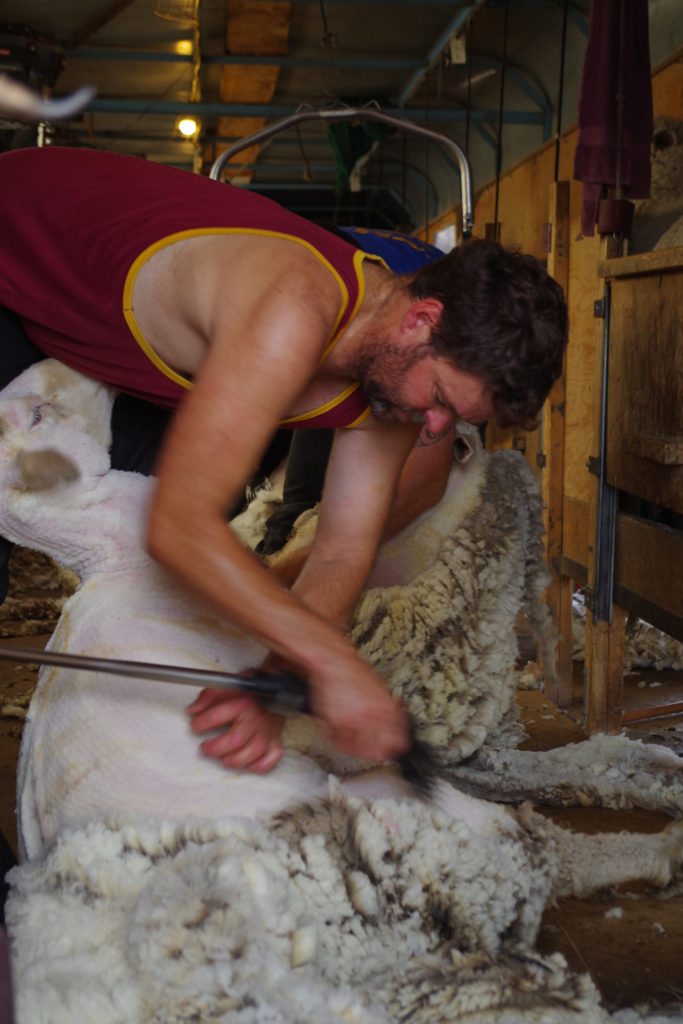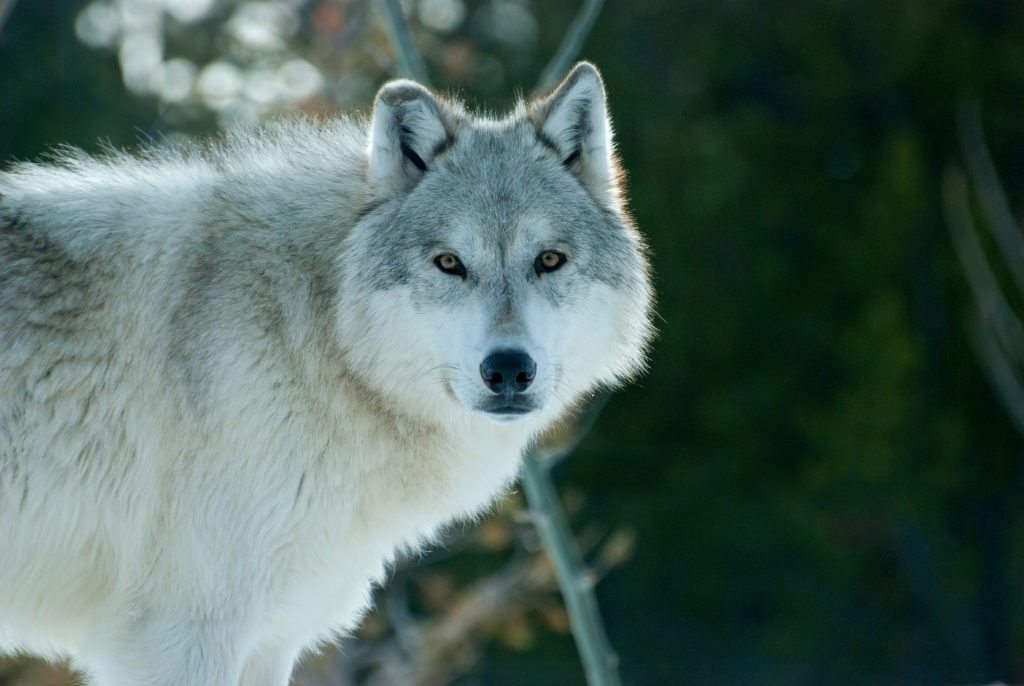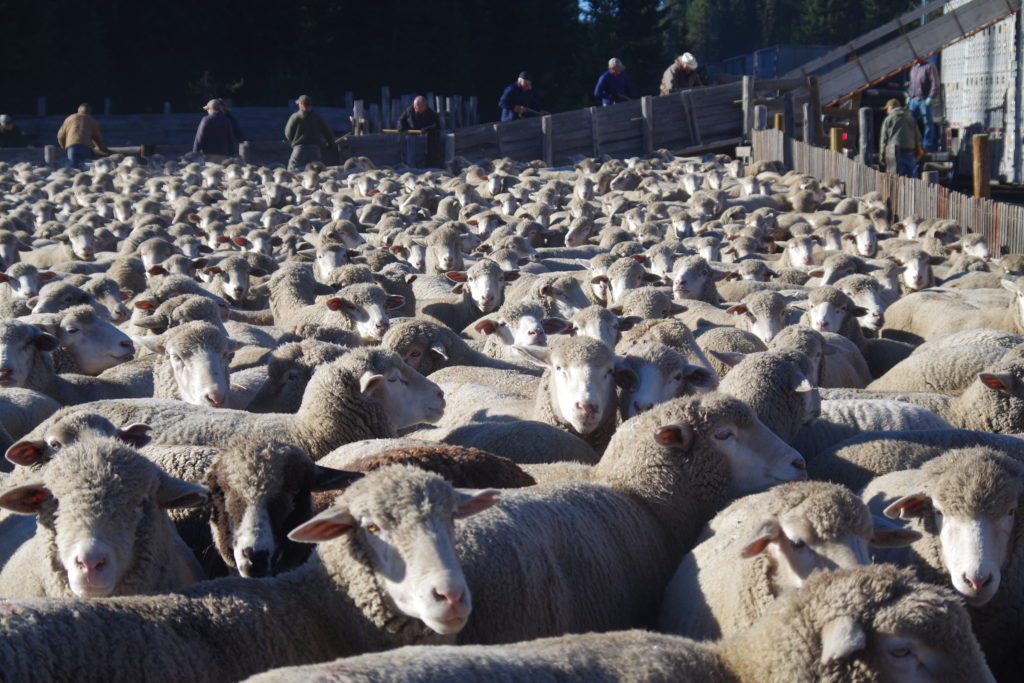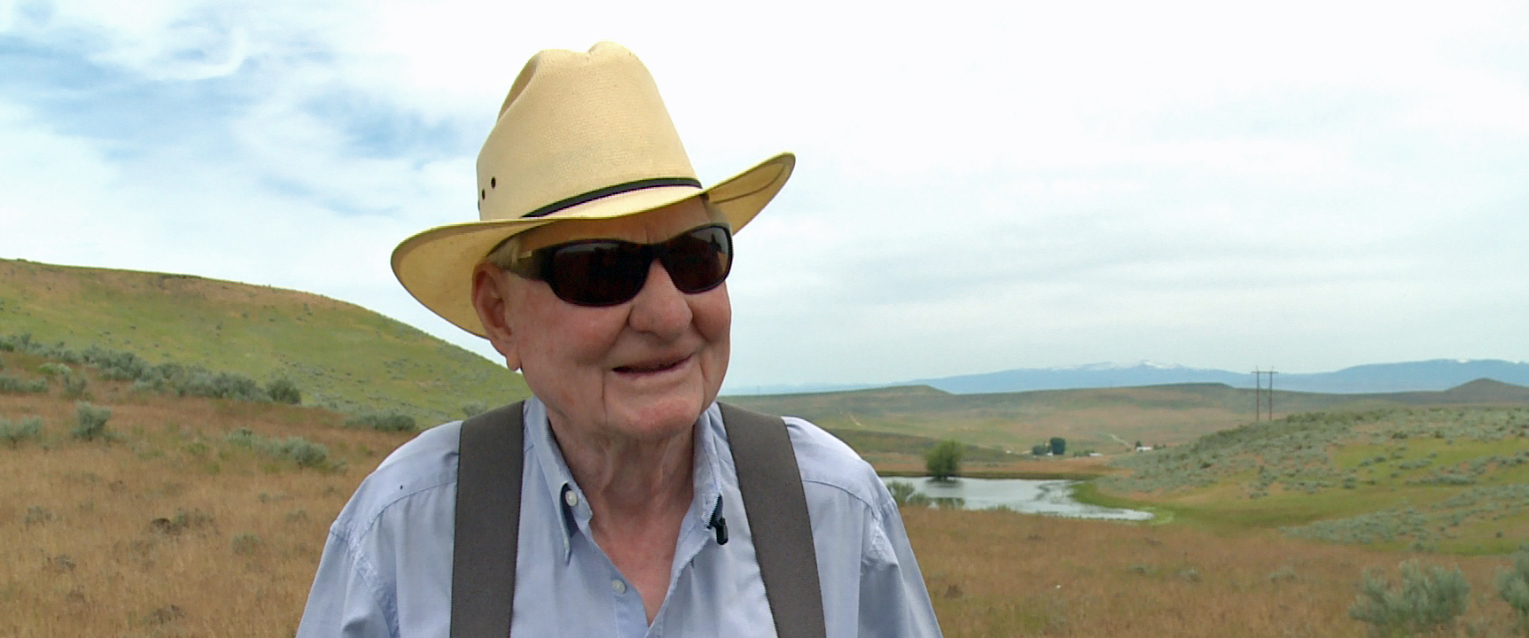The Soulen family name is well-known in Idaho – it’s synonymous with sheep ranching. The Soulens have been raising sheep in Southwest Idaho since 1926.
The late Harry Soulen Sr. started the business with the Mesa Sheep Company, near Cambridge. Harry grew the operation to the point where they ran 10,000 sheep and 400 head of cattle on 32,000 acres of land in five Southwest Idaho counties.
Harry’s son, Phil, who’s still very active in the business, is a spry 88 years old now. He grew the family sheep operation to 47,000 acres of land in eight SW Idaho counties, with 12,000 sheep and 1,800 beef cattle at the peak of operations.
Phil Soulen has been instrumental in growing the business. He enjoys the ranching livestyle.
“I like everything about it,” he says. “Ranching, you live out in the open. You look up at the sky, and you know what it’s going to do, rain or shine, you’ve got your work to do, and you just do it. That’s all. It’s an active life. That’s what I like about it. It’s that simple.”
Soulen Livestock is one of the last remaining large range outfits remaining in the state of Idaho. They trail their sheep on an Incredible Journey that spans hundreds of miles through Southwest Idaho, following the green.
In the winter, they graze in the Morley Nelson Snake River Birds of Prey National Conservation Area. In March, they trail the ewes to the Soulen sheep camp on the Payette River near Letha for shearing … going around the city of Caldwell in the process. Next, they trail the sheep to the Soulen’s spring range in Crane Creek, where the ewes give birth to lambs – it’s called range-lambing. And then in June, they trail the sheep across West Mountain to summer range in the Payette National Forest.
“It’s an amazing outfit in that they winter in the birds of prey area down by the Snake River. Those sheep never see a truck,” says Stan Boyd, former executive director of the Idaho Wool Growers Association. “And they’ll go all the way to McCall, Idaho. This is truly a unique outfit. This is something you don’t see in the West anymore … it’s probably 600 miles that those ewes walk every year.”

A map of the Incredible Journey that the Soulen sheep do every year.
That’s quite an epic hike for the sheep and the herders who stay with them every step of the way. But the whole idea is to raise quality lambs and keep the cost of production under control, Soulen says.
By having winter grazing permits on BLM land, for example, the Soulens don’t have to feed the sheep hay in the winter months.
“You had to go out and put this together, it didn’t just happen,” Soulen says. “You had to have the vision for a sustainable year-round operation that could be profitable.”
According to people who know Phil Soulen, he has a knack for making sound business decisions and taking good care of the range.
Lt. Gov. Brad Little, a lifelong rancher from Emmett, had this to say about Phil Soulen.
“He adapted to change and made a great sheep outfit,” Little said. “He bought ranches that were complementary to other ranches, and sold others that were kind of surplus. He always kept his eyes on the ball about the long-term sustainability of the sheep operation.
“He cares a lot for his community, his family and his friends. He’s got great friends everywhere in Idaho, he’s very revered in Weiser where he’s spent all of his life, he’s very revered.”
Coming from a ranching background, the Little family spent family time with the Soulen family. Lt. Gov. Little dated Teresa Soulen when they were both at the University of Idaho, and they got married soon after graduating.
“I had a bit of an advantage because both he and I were passionate about the livestock industry, talked about business, talked about public lands, talk about the livestock industry in Idaho,” Little says.
Adds Stan Boyd, “I’ve known Phil Soulen my entire life. He’s an amazing individual, a real entrepreneur. He’s a good businessman. He knows how to take a calculated risk, and he’s been very successful in it, which benefitted not only the Soulen family, but also the community. He’s created the tax base, hired people, just has been an amazing philanthropist in the community.”
Dr. Mark Pritchard, a retired veterinarian in Weiser, helped care for the Soulen sheep and cattle for nearly 40 years and became friends with the family.
“We became good friends, and I’m also good friends with his son Harry, actually all of the family members. I feel like I’m part of the family,” Pritchard says. “Phil is my golfing partner in men’s league. He just turned 88 last week. He shot a hole in one this year. He told me it’s his 5th one. He always carries me in the golf game. He’s a very good golfer. Very competitive at everything. He’s also very fair in everything that he does.”
Soulen’s philanthropy in Weiser goes deep.
“He’s done many things for the community that probably a lot of people don’t know,” Pritchard says. “He’s been on the school board, he was on that for many years. He’s a proponent of education. He’s helped get bonds passed. Very active in the Weiser Education Association, which gives scholarships to deserving kids going to college. He’s on the hospital board and donated money to improve our facility in Weiser. They’ve been very generous to the community, and been a very big part of it. For years!”
Phil Soulen was born in 1929, the same year that his father purchased the Clinton Sheep Company. His mother was named Beulah. Phil grew up working on the ranch alongside his father.
“As a kid, I worked on the ranches, drove old Pop and Johnnies, you started them on gasoline and then you switched to kerosene – the old John Deere 8. Of course before that, I drove a team of horses. Every summer, that’s where I went, the ranch.”
Phil Soulen graduated from Weiser High School (class of 1948) and got a business degree from the University of Idaho in 1953. He was in the Phi Delta Theta fraternity. He fondly remembers his time at the University of Idaho in a video produced by the university.
“Well, I think I was like most students – I really was homesick the first year,” he says. “I got over that pretty quick and then I did everything there was to do. I was house manager, and then president of the fraternity before I graduated. I was in the school of business. I think they called it Extractive industries at the time. But the ag classes were important. No question about it.
“My father being in the livestock business, sheep and cattle, too, why I planned on going home and being in the same business.”

Phil and Erlene Soulen on their wedding day.
The day after Phil graduated from the University of Idaho, he married Erlene Clyde in Moscow. Erlene also had deep agrarian roots. She grew up on a family farm in Moscow. Phil and Erlene would have three daughters and one son – Teresa, Margaret, Helen and Harry.
The Soulens’ sheep operation captured the imagination of College of Idaho professor and author Louie Attebery, who wrote a book about their sheep operation. It’s titled “Sheep May Safely Graze,” the name of a beautiful pastoral song by Johann Sebastian Bach.
Let’s take a tour the Soulen sheep ranching operation by season, starting with the spring.
SPRING
For the Soulens, the beginning of spring is marked by shearing their sheep. The Soulens shear the ewes in March at a large ranch next to the Payette River. A crew based in Wyoming shears the sheep. The animals come through the shearing trailer, 5-6 at a time, while the men cut off the wool cape in a way that preserves the whole cape.
“That’s the name of the game, if we can de-fleece it, shear it, and keep that fleece nice and whole, put it out, and the girls can sort the good wool, and the short wool, put it into grades,” says Greg Hawea, shearing crew foreman.
The shearing crew is skilled at what they do.
“We like to try to do about 800, which gives us about 135 to 140 a man,” Hawea says.

Professional shearers remove the cape in one piece for the best value
Sheep-shearing is a specialized skill. The shearers come from all over the world. “We got a guy from Peru, Australia, New Zealand, America … so it’s a bit of a mixture isn’t it?”
The shearers make about $300 a day. The crew is nomadic – they work in Utah, Wyoming and Colorado in the spring months, Europe in the summer, and Australia and New Zealand the rest of the year. “We’ll get back to Australia in October, and then I like to get to New Zealand for Christmas-time,” Hawea says.
The shearing crew separates the wool into different grades and bales it in a hydraulic press. The Soulens have a barn where they can store the wool until the prices are best. After all of the ewes get sheared, they follow the green to the north, toward the Soulen’s extensive spring range in Crane Creek.
The Soulens own four different ranches in the Crane Creek area, totaling about 45,000 acres, all contiguous. Phil bought the Center Ranch at one time to unify their blocks of land.
“It was really important to us because we had to traverse to go to our lower ranch country, we had to come, and there was a disconnect, and we had to cross this property here,” Soulen says. “I bought it. It was a good move.”
The Soulens used to shed-lamb in the extensive lambing sheds at their ranch on the Payette River. But to save on labor costs, they converted to range-lambing many years ago.
It’s important to keep the ewes in small groups when they’re first giving birth, explains Soulen’s sheep foreman, Caesar Ayllon. “Because it’s easy for them to lose their lambs in large groups, and the baby die. So small groups are easier for the momma to find their babies. We lambing during the day, here and there, small groups and keep them moving, 50 or 40 or more,” Ayllon says.

The Soulens developed many small reservoirs on private, state and BLM land in the Crane Creek spring range to ensure there’s enough water for livestock.
The Soulens’ Peruvian herders keep watch over more than 4,000 ewes while they give birth to lambs. After a wet winter, the range is deep green with lots of feed, and there’s also plenty of water as all of the reservoirs are full in the Crane Creek range.
Phil Soulen developed many of the reservoirs over his lifetime. “That’s the key to everything. If you don’t have the water, you can’t graze this country. On the other side of the hill, we have 25 reservoirs, and there’s 5 or 6 on this side. Water is the key,” Soulen says.
The Soulens graze their cattle and sheep herds in the same range in Crane Creek. “Grazing sheep and cattle on the very same piece of range is the way to go! They eat different forage. We’ve done that for years. Our range is in as good a condition as any others in the country,” he says.
SUMMER
In June, the Soulens and their herders trail the sheep from the Crane Creek range to McCall and the Payette National Forest for summer grazing. They take the old stock driveway from Indian Valley over West Mountain and then follow the timbered ridge into the national forest.
The Payette forest gets lots of snow in the winter, and so it makes for great summer range, with lots of vegetation for the sheep to eat. At one time, the Soulens grazed 10,000 sheep on 115,000 acres of forest grazing allotments during the summer.
By this time, two of the Soulen children, Margaret and Harry, were working alongside Phil, raising the sheep. Margaret also served in leadership roles in the American Sheep Industry Association, a trade organization that works to help ranchers with immigration and public lands issues.
In the early 1990s, a big issue came to the fore – concerns about domestic sheep transmitting pneumonia to bighorn sheep in Hells Canyon.
Bighorn sheep hunters wanted to reintroduce bighorns into Hells Canyon to bolster historical populations (pre-white settlement). A total of 33 sheep were transplanted into Hells Canyon in 1976 and 1979.

Concerns about domestic sheep transmitting a pneumonia virus to bighorn sheep in Hells Canyon resulted in the U.S. Forest Service shutting down all domestic sheep grazing in the area, forcing the Soulens to reduce their sheep herd by 50 percent. Two other sheep ranchers affected by the decision were put out of business entirely.
In January 1997, the Wallowa-Whitman National Forest wrote a letter to the Idaho Wool Growers Association, asking for their support in the reintroduction effort. The letter stated that the reintroduced animals would be considered “at risk” for “potential disease transmission and death.”
“The three departments will also take whatever action is necessary to reduce further losses of bighorn sheep without adversely impacting existing domestic sheep operations,” the letter said.
The supervisor of the Wallowa-Whiteman Forest signed the letter along with the directors of the Idaho Fish and Game, Oregon Dept. of Fish and Wildlife, Washington Dept. of Fish and Wildlife, the BLM and the Foundation for North American Wild Sheep.
The Soulens’ sheep did not graze in Hells Canyon per se, but their sheep grazed in a part of the Payette forest where it might be possible that bighorns crossed paths with domestic sheep. Disease can be spread if they touch noses, according to experts. It’s also possible for disease to be spread at close range through airborne bacteria.
After the reintroduction effort occurred, bighorn sheep numbers declined, and three environmental groups filed a lawsuit, claiming that bighorns and domestic sheep could not co-exist. They wanted the Payette National Forest to terminate domestic sheep grazing in five grazing allotments where there might be overlap with bighorns.
In 2008, U.S. District Judge Lynn Winmill ordered the Payette forest to do an environmental impact study on the matter. In the end, former Payette National Forest Supervisor Suzanne Rainville ruled in 2010 that the domestic sheep would have been be phased out. The Soulens had to sell off more than 5,000 sheep. Two other sheep ranchers, Ron Shirts, and Mick Carlson, were put out of business entirely.
“I was involved with the wool growers when they originally proposed introducing bighorns back into the Hells Canyon area, and we thought we had a deal,” says Lt. Gov. Little. “We really felt it was a body blow. It was unfair.”
The Idaho Wool Growers took the issue to court, using that letter from the Wallowa-Whitman National Forest as proof that domestic sheep were supposed to be held harmless if a disease issue arose. The case went all the way to the Idaho Supreme Court. But the justices ruled that the letter was not an official “contract” and did not carry sufficient weight to stop the Forest Service ruling.
Now, 7 years later, it’s still hard for Phil Soulen to talk about that loss. “You know, I’m a stubborn old fella, I’m pretty unhappy about it. I have to get over that. It’s hard to change,” Soulen says.
Today, the bighorn sheep population in Hells Canyon Unit #18, the one at issue with domestic sheep use, has approximately 15 bighorn sheep residing in it, an increase of 2 animals since a survey was completed in 2009, according to Idaho Fish and Game. Disease continues to be a problem in the wild sheep herds, Fish and Game biologists say, as wild female sheep carrying the pasturella virus may pass it onto the lambs.
“We’re trying to prevent any more disease from infecting the herds,” says Frances Cassirer, bighorn biologist for Idaho Fish and Game.
Overall, there are an estimated 850 bighorn sheep in Washington, Oregon and Idaho in the greater Hells Canyon region.

Rocky Mountain gray wolves have preyed on Soulen sheep in the Payette National Forest. Some years are worse than others.
Another issue that the Soulens have to cope with every year is protecting their sheep from predators. They deal with coyotes, bears and cougars when raising the lambs in Crane Creek, and then they brace for impacts by wolves in the national forest.
One August, wolves stampeded the sheep into a deep ravine in the Payette forest.
“We had some wolves that got into one of our bands one night,” says Harry Soulen Jr. “They got ‘em running in some steep country. And piled up a bunch of ‘em. We lost, our count was 57 sheep in the pileup. We were able to confirm those due to wolves. We know that some we didn’t find and some that couldn’t be confirmed were also killed by wolves. Our total summer losses were 100 head of sheep.”
“We’ve had some years where we lost 300 to wolves in a single summer.”
To decrease losses, the Soulens use more guard dogs with each band of sheep and keep the sheep close to camp at night, when wolves are likely to attack.
“Now at night, we try and bed the sheep as close as we can to camp,” Harry Soulen says. “The herders, and the guard dogs are all very close, so that helps. We’ve got 3-4 guard dogs in every band. We’re very aware of the problem, and so we’re suffering less losses than we would otherwise.”
FALL
In the fall, when the temperatures drop in the mountains, and the lambs are getting ready for shipping, the Soulens move the sheep to Sater Meadows in the Payette forest. The long hike has finally come to an end for the lambs.
The Soulens have a shipping corral in the meadows. Family friends and volunteers come to help drive the sheep into a narrow chute, where lambs are separated from the ewes, and loaded into the trucks one by one.
Phil Soulen helps load the sheep into the truck next to Stan Boyd. Boyd has worked on finding the best deal for the Soulens with American wholesale meat processers through the Rocky Mountain Sheep Marketing Association, a producer-owned coop.

Soulen lambs are ready to be shipped to the market at the end of the summer.
“We operate on a world market, and right now, there’s a worldwide shortage of lamb,” Boyd says. “Our job is to go out and meet with the producers and packers to sell the lamb at the highest possible price. And it’s been successful.”
Yes, but sadly, the number of sheep ranching operations in Idaho has declined over the years because of competition from Australia and New Zealand, low prices, labor issues and federal land management issues, Boyd says.
“It’s severely reduced,” he says. “When I came on board as executive director of the Idaho Wool Growers in 1978, there was 600,000 breeding stock in the state of Idaho, and now it’s 180,000, so it’s reduced by two-thirds. But it seems to have leveled out. You have 30 range outfits in the state of Idaho. They’ve figured it out. They’ve made it cost-effective.”
Wholesale stores like Costco sell Australia and New Zealand lamb at rock-bottom prices. The Soulens and Boyd would prefer that people support American sheep producers by buying American lamb. Check the label in the grocery store. Phil Soulen says American lamb chops are larger and taste better.
“They bring in their frozen product but it isn’t as good of a product, and the lamb produced by the American producers goes to the metropolitan areas,” Phil Soulen says. “It commands a higher price than they sell New Zealand for and there are people that’ll buy it, and glad to have it. It’s a better lamb chop.”
Overall, at shipping time, the ranchers are happy to see the product of a year’s worth of work, quality lambs that have been raised on nothing but natural vegetation in the Idaho mountains and mother’s milk.

Harry Soulen separates the lambs from the ewes at the shipping corral in the Payette National Forest.
Harry Soulen counts the sheep as they come into the corral. The horses that have been carrying pack saddles all summer take a break in the frosty meadow. The guard dogs lie down near the corral.
Adds Margaret Soulen, “We ship in the fall of the year. We wean the lambs off the ewes and send them to market. It’s a culmination of all your efforts during the year. You get to work with these animals, you get to work with people from all over the world, see how the grass grows differently very year. How can anyone not love this business?”
“I really miss the sheep,” says Lt. Gov. Little. “Teresa and I were raised going to shearings, and going to shippins, our kids were raised going to shearins and going to shippins, and now Teresa makes sure the grandkids go up and help Phil whether they’re shipping lambs or whatever. It’s just a big part of our lives.”
After the Soulens lambs are shipped to the market, it’s time to breed the ewes to a group of rams, and start the whole cycle over again. The ewes graze their way home to the Crane Creek range. And then, before winter comes, they’ll head back to the BLM pastures in the Morley Nelson Snake River Birds of Prey National Conservation Area.
At 88, Soulen is glad to see his youngest child, Harry, running the whole operation now. Margaret has retired in Salisbury, Maryland, with her husband, Joe Hinson.

Harry is hoping that his son, Philip, or daughter, Grace, may want to be the 4th generation to keep the Soulen sheep operation going into the future.
“It’s been a good long life here on the ranch,” says Harry Soulen. “Very few people get to grow up and work with their family or their father like I have. Quite honestly, working hand in hand with him day in and day out and picking up the way he did it, you know, it’s been a great experience for me.”
“It’s been a good life, and still is a good life, because I can do quite a few things,” adds Phil Soulen. “But thank goodness, I’ve got Harry manage it though.”
Phil is still playing golf, and he likes to go fishing when he has some spare time. “Once in a while, I’ll hit a decent shot. But I did get a hole in one this spring, I guess.”
Harry, meanwhile, plans to keep the business moving forward, and he hopes one or both of his children may have an interest in a ranching career. “I see the industry continuing to be viable,” he says. “People want to wear wool, and people want to eat lamb, so as long as we can make it work, we plan on keeping going.
“I would love to see this operation go on to the next generation beyond me. I’ve got a son and daughter, and they’re young, and have expressed some interest, so I’d love to see Soulen Livestock go on to the fourth generation, and hopefully beyond that.”
Steve Stuebner is the writer and producer of Life on the Range, an educational project sponsored by the Idaho Rangeland Resource Commission.

